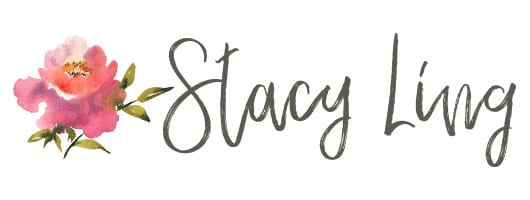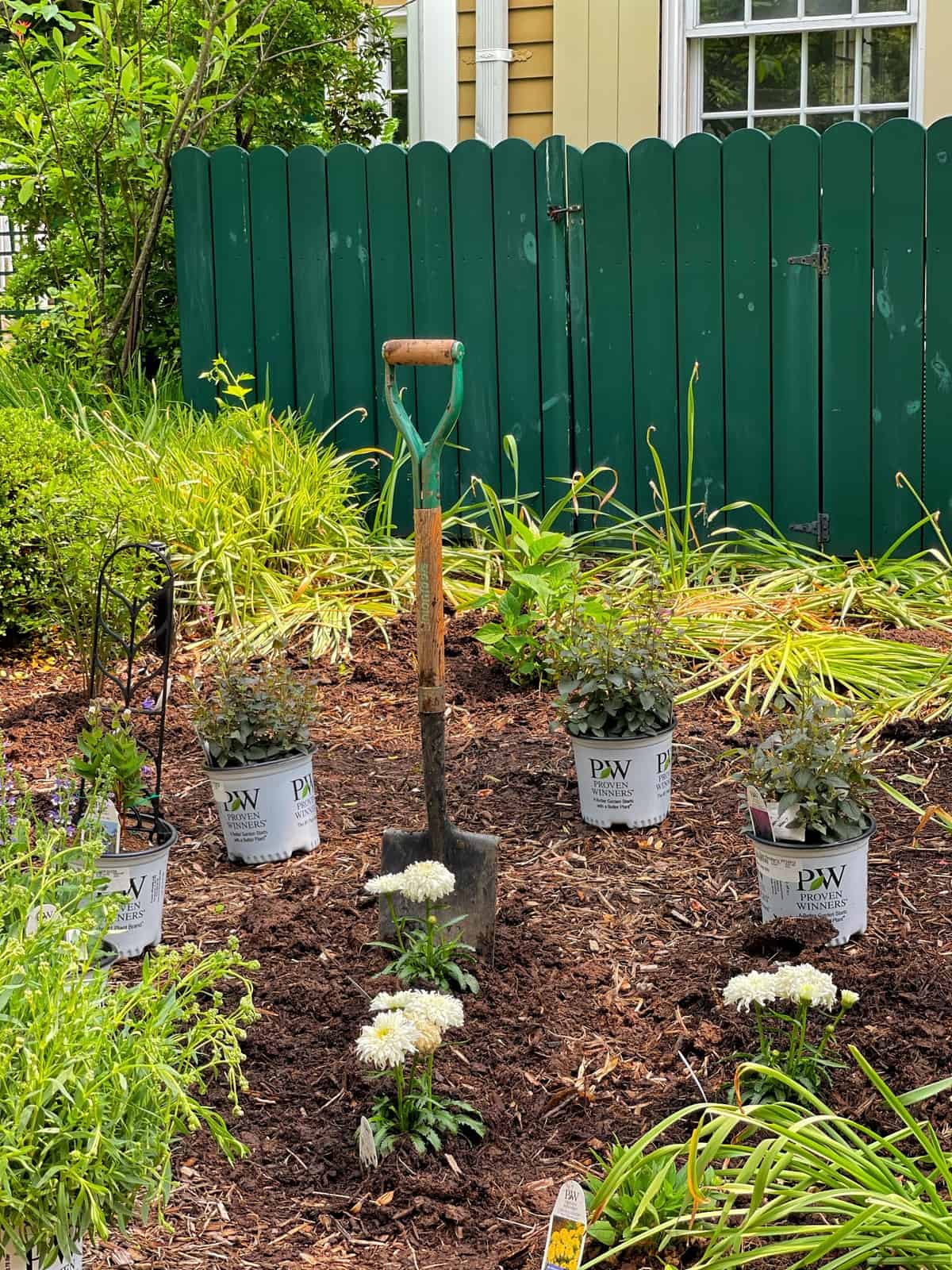Discover the best native plants to attract bees, butterflies, and more. Create a thriving pollinator garden with these top native plant choices.
Creating a thriving pollinator garden starts with choosing the right plants. Native plants are the best choice for attracting pollinators like bees, butterflies, and hummingbirds. They are well-adapted to local conditions, require less maintenance, and provide essential nectar and pollen. In this guide, we’ll explore the top native plants that will transform your garden into a haven for pollinators.
Whether you’re looking to support local ecosystems or simply enjoy a bustling, vibrant garden, these native plants are essential for any pollinator-friendly space.
(Posts on stacyling.com may contain affiliate links. Click HERE for full disclosure.)

What Are Native Plants for Pollinators?
Native plants are species that naturally occur in a specific geographic region or ecosystem, having evolved and adapted to the local climate, soil, and environmental conditions over thousands of years. These plants form essential parts of their natural ecosystems, establishing crucial ecological relationships with native pollinators, wildlife, and microorganisms.
Because native plants are well-suited to their local conditions, they are more resilient and require less maintenance. They have adapted to cope with the local climate, pests, and diseases, reducing the need for excessive water, fertilizers, and pesticides. This makes them an excellent choice for sustainable gardening and landscaping.
Since they are more resilient and require less maintenance, they are great starter plants for new gardeners and those with busy schedules.

Benefits of Growing Native Plants For a Buzzing Pollinator Garden
Using native plants in gardening and landscaping offers numerous advantages:
- Biodiversity and Ecological Balance: Native plants provide essential food and habitat for local wildlife, including pollinators, birds, and beneficial insects, helping to maintain and restore biodiversity.
- Water Conservation: Adapted to local rainfall and soil conditions, native plants often require less water. Their deep roots prevent soil erosion and improve water infiltration, reducing irrigation needs.
- Low Maintenance: Suited to local climates, native plants need minimal care, with reduced reliance on fertilizers, pesticides, and extra watering.
- Aesthetics and Cultural Value: Native plants create unique, regionally distinctive landscapes, enhancing the natural beauty and cultural heritage of an area.
Incorporating native species promotes ecological sustainability and creates beautiful, harmonious landscapes. Now that we understand the importance of native plants, let’s chat about the importance of pollinators and ways to design a garden that attracts them.

Why Pollinators Are Important
Creating a pollinator garden provides a sanctuary for bees, butterflies, hummingbirds, and other beneficial insects, while also enhancing your outdoor space. Here’s why pollinators are crucial:
- Plant Reproduction: Pollinators enable the fertilization of plants, essential for producing seeds and fruits.
- Biodiversity: They facilitate cross-pollination, promoting genetic diversity and ecosystem resilience.
- Food Production: Many crops depend on pollinators, essential for our food supply.
- Ecosystem Support: Pollinators contribute to broader ecosystem health.
- Beauty and Aesthetics: They enhance garden beauty and enjoyment.
Watching these workhorses in nature adds joy and vitality to any garden.

Top Design Tips for Creating a Successful Pollinator Garden with Native Plants
Creating a pollinator garden with native plants not only supports essential wildlife but also adds beauty and vibrancy to your outdoor space. Designing such a garden requires thoughtful planning and effective techniques to ensure it thrives. Here are some design tips to help you create a successful pollinator garden that attracts and sustains bees, butterflies, and other beneficial insects while enhancing your landscape’s visual appeal.
Enhancing Native Plant Diversity for a Pollinator Garden
Adding a variety of native plants to your pollinator garden is key to attracting and supporting a wide range of beneficial insects and wildlife. By incorporating different species with varying bloom times, flower shapes, and colors, you create a rich habitat that provides continuous food sources and shelter throughout the growing season.
Include plants with a mix of flower shapes, such as tubular, daisy-like, and umbel-shaped, to accommodate different pollinator species. This diversity not only enhances the ecological health of your garden but also boosts its visual appeal.
Grouping and Mass Planting for Pollinator Gardens
Planting in groups or masses, rather than scattering individual plants, enhances your garden’s visual impact and makes it easier for pollinators to locate flowers. This approach maximizes pollination opportunities by creating concentrated areas of nectar and pollen, ensuring a more effective and attractive habitat for bees, butterflies, and other beneficial insects.

Successional Blooming for Continuous Pollinator Support
Select plants that bloom at different times of the year to ensure a continuous food source for pollinators. Incorporating early, mid, and late-season bloomers provides sustenance throughout the growing season, attracting a diverse array of pollinators and supporting their needs year-round.
This approach not only helps maintain a thriving pollinator population but also enhances the beauty and diversity of your garden throughout the seasons.
Incorporating Host Plants for Pollinator Life Cycles
Host plants are essential for specific pollinator species, providing crucial support for egg-laying and caterpillar development. Research the host plants needed by butterflies and moths in your area and include them in your garden. This ensures you support the entire life cycle of these pollinators, from egg to adult.
When you include host plants, you not only attract adult pollinators but also contribute to the next generation, creating a sustainable and thriving pollinator habitat in your garden.

Provide Essential Water Sources in Your Pollinator Garden
Pollinators need water for hydration and reproduction. Create a shallow water feature, such as a birdbath or a small pond, with stones or twigs for landing spots. Ensure a constant water supply by regularly refilling it or adding a drip system.
You don’t need a large yard to enjoy a water feature; many options are available to suit any garden space or budget. Adding a water source supports pollinators’ needs and enhances your garden’s overall appeal.

Native Plants: Avoiding Pesticide in Your Pollinator Garden
Avoid using pesticides in your garden, as they can harm pollinators and other beneficial insects. Instead, embrace natural pest control methods like companion planting and introducing beneficial insects to maintain a balanced ecosystem.
Even eco-friendly pesticides can be problematic for pollinators, so it’s best to avoid them altogether. Creating a pesticide-free garden supports a healthy environment for bees, butterflies, and other pollinators, ensuring their safety and well-being.
And one of the best ways to create a pesticide-free garden is to grow more native plants!

Avoid Cutting Back Plants Too Early
Many pollinators, such as butterflies and bees, rely on the stems and foliage of perennial plants for overwintering and shelter during colder months. By leaving these plants standing until late winter or early spring, you provide vital protection and nesting opportunities. The dried flower heads and seed pods also serve as valuable food sources for birds throughout the winter.
Resist the urge to tidy up your garden too soon and allow these natural elements to support the pollinators and wildlife that depend on them.
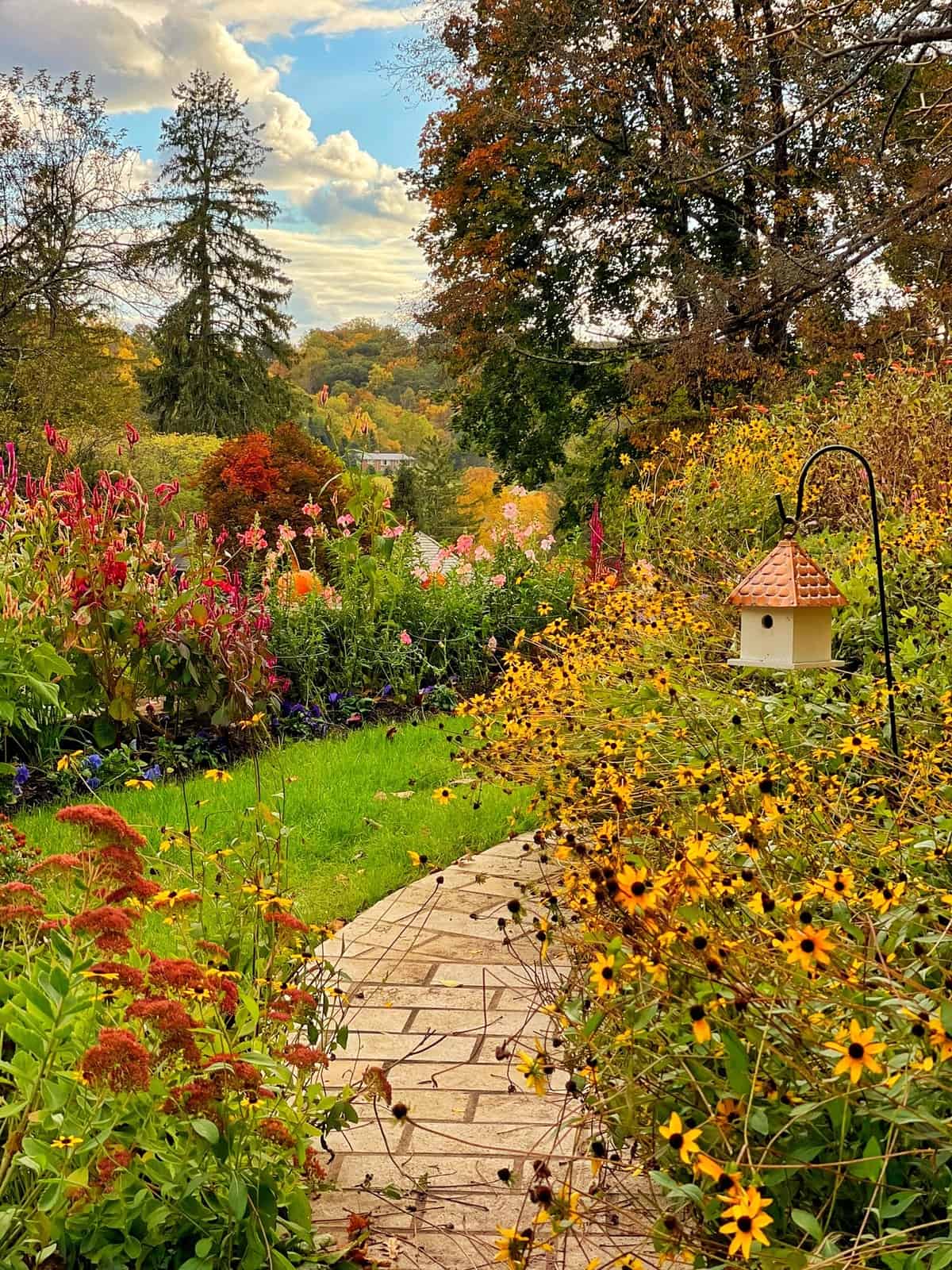
Allow Herbs to Go to Seed for Pollinator Support
Flowering herbs provide nectar and pollen for bees, butterflies, and other beneficial insects, supporting their populations and contributing to garden biodiversity. While allowing herbs to go to seed can alter their flavor, it offers much-needed food sources and habitats for pollinators.
Examples of beneficial herbs include cilantro, dill, fennel, basil, sage, and thyme. By letting these herbs flower and seed, you create essential food sources and habitats for pollinators, enhancing the ecological health of your garden.
Now that you have some design tips in mind, let’s explore a selection of native plants that are perfect for a pollinator garden.

Creating a Pollinator Garden: The Best Native Plants
Creating a thriving pollinator garden starts with choosing the right native plants. These plants are naturally adapted to your local environment and provide essential nectar and pollen for bees, butterflies, and other beneficial insects. By selecting a variety of native species, you ensure a continuous food supply and support the biodiversity of your garden. Here are some of the best native plants to include in your pollinator garden to attract and sustain these vital creatures.
Bee Balm (Monarda spp.)
Bee Balm is a vibrant perennial native to North America, well-known for attracting a variety of pollinators. As a native species, bee balm is well adapted to the local climate and soil conditions, making it a low-maintenance addition to any garden.
Blooming from summer to fall, its vibrant and showy flowers, available in shades of pink, red, and purple, are irresistible to a variety of pollinators. Bees, butterflies, and hummingbirds are particularly fond of bee balm, drawn to its abundant nectar-rich blooms. The tubular flowers and fragrance make it a popular destination for these valuable pollinators.
- USDA Hardiness Zone: 4-9
- Type: Perennial
- Sun Requirements: Full sun to partial shade
- Light Conditions: Prefers full sun for best flowering
- Bloom Time: Mid-summer to early fall
- Height: 2-4 feet
- Width: 2-3 feet
- Native Range: Eastern North America
- Pollinators Attracted: Bees, butterflies, and hummingbirds
- How It Attracts Pollinators: Bee Balm’s tubular flowers are rich in nectar and attract a wide range of pollinators, providing a valuable food source throughout its blooming period.

Black-Eyed Susan (Rudbeckia hirta)
Black-Eyed Susan is a hardy, sun-loving perennial native to North America, and it’s a favorite among pollinators that brings a burst of sunny cheer to any garden. They are hardy, daisy-like flowers that are a favorite of butterflies and bees.
With summer-to-fall blooms, its golden-yellow petals with dark centers add a cheerful touch to any garden and are a magnet for a wide range of pollinators. Bees and butterflies are frequent visitors to Rudbeckia, seeking out its nectar-rich flowers. Additionally, it attracts beneficial insects such as ladybugs and hoverflies, which help control garden pests.
It’s one of my favorite blooms because its flowers effortlessly and looks amazing in the cottage garden. This native beauty not only adds a pop of color to the landscape but also provides vital nourishment for our important pollinator friends.
- USDA Hardiness Zone: 3-9
- Type: Perennial (often grown as an annual)
- Sun Requirements: Full sun
- Light Conditions: Prefers full sun for optimal growth
- Bloom Time: Summer to early fall
- Height: 1-3 feet
- Width: 1-2 feet
- Native Range: Central and Eastern North America
- Pollinators Attracted: Bees, butterflies, and other insects
- How It Attracts Pollinators: The bright, daisy-like flowers with dark centers are highly attractive to bees and butterflies, providing a rich source of nectar and pollen.

Purple Coneflower (Echinacea purpurea)
Purple Coneflower is a robust perennial native to North America, known for its striking appearance and pollinator-friendly attributes. A classic choice for pollinator gardens, the purple coneflower attracts bees, butterflies, and hummingbirds.
Coneflowers, also known as Echinacea, are beloved native plants that bring beauty and ecological benefits to gardens. Native to North America, coneflowers have become popular for their vibrant and cone-shaped flowers in shades of purple, pink, and white.
Its distinctive pink-purple petals and cone-shaped centers provide nectar-rich flowers throughout the summer. I’ve been growing coneflowers for years. There are lots of different varieties available if you want to expand your flower palette.
- USDA Hardiness Zone: 3-9
- Type: Perennial
- Sun Requirements: Full sun to partial shade
- Light Conditions: Prefers full sun for best growth
- Bloom Time: Summer to early fall
- Height: 2-5 feet
- Width: 1-2 feet
- Native Range: Central and Eastern North America
- Pollinators Attracted: Bees, butterflies, and hummingbirds
- How It Attracts Pollinators: The large, daisy-like flowers with prominent centers provide abundant nectar and pollen, attracting a variety of pollinators throughout the blooming season.

Butterfly Weed (Asclepias tuberosa)
Butterfly Weed is a vibrant perennial native to North America, renowned for its bright orange flowers and attractiveness to pollinators. It is a captivating native plant that serves as a beacon for pollinators, particularly butterflies. As a member of the milkweed family, butterfly weed is not only a vibrant addition to the garden with its clusters of bright orange flowers, but it also plays a crucial role in supporting monarch butterfly populations.
The nectar-rich blooms attract various pollinators, including bees and hummingbirds, but it is especially beloved by butterflies, like the monarchs, who lay their eggs on the plant and rely on it as a food source for their caterpillars.
By planting butterfly weed, we provide a valuable habitat and food resource for these delicate and beautiful creatures. I found this plant readily self-sowed in other areas of my garden. It never overtook a space by any means, but I’d find it popping up in different locations. Butterfly weed grows with ease and looks so pretty in the summer garden.
Last year, I tried planting it here at the new house but a rabbit mowed it down and it hasn’t returned. So, I’m on the hunt to replant it again.
- USDA Hardiness Zone: 3-9
- Type: Perennial
- Sun Requirements: Full sun
- Light Conditions: Prefers full sun
- Bloom Time: Late spring to early fall
- Height: 1-2.5 feet
- Width: 1-1.5 feet
- Native Range: Eastern and Central North America
- Pollinators Attracted: Butterflies, bees, and other insects
- How It Attracts Pollinators: Butterfly Weed’s clusters of bright orange flowers are rich in nectar, attracting butterflies, especially Monarchs, and providing a critical food source for many pollinators.

Liatris (Liatris spicata)
Liatris, commonly known as Blazing Star or Gayfeather, is a native perennial that stands out for its tall, spiky flower clusters and pollinator appeal. Native to North America, liatris is well-adapted to thrive in a variety of soil conditions.
Its tall, slender spikes of purple or white flowers make it a favorite among pollinators as it adds vertical interest to flower gardens from mid to late summer. Bees and butterflies are particularly drawn to the nectar-rich blooms of liatris, eagerly collecting their sustenance from the tiny individual florets that make up each spike.
Oh and the same rabbit that ravaged my butterfly weed got to my liatris last year, but this year? It’s doing well and has been left untouched. So I’m hoping to divide it this fall so I can double my stock. But I digress.
- USDA Hardiness Zone: 3-8
- Type: Perennial
- Sun Requirements: Full sun
- Light Conditions: Prefers full sun
- Bloom Time: Mid-summer to early fall
- Height: 2-5 feet
- Width: 1-2 feet
- Native Range: Eastern and Central North America
- Pollinators Attracted: Bees, butterflies, and hummingbirds
- How It Attracts Pollinators: The tall, dense spikes of purple flowers are rich in nectar, making them highly attractive to a variety of pollinators throughout the blooming period.
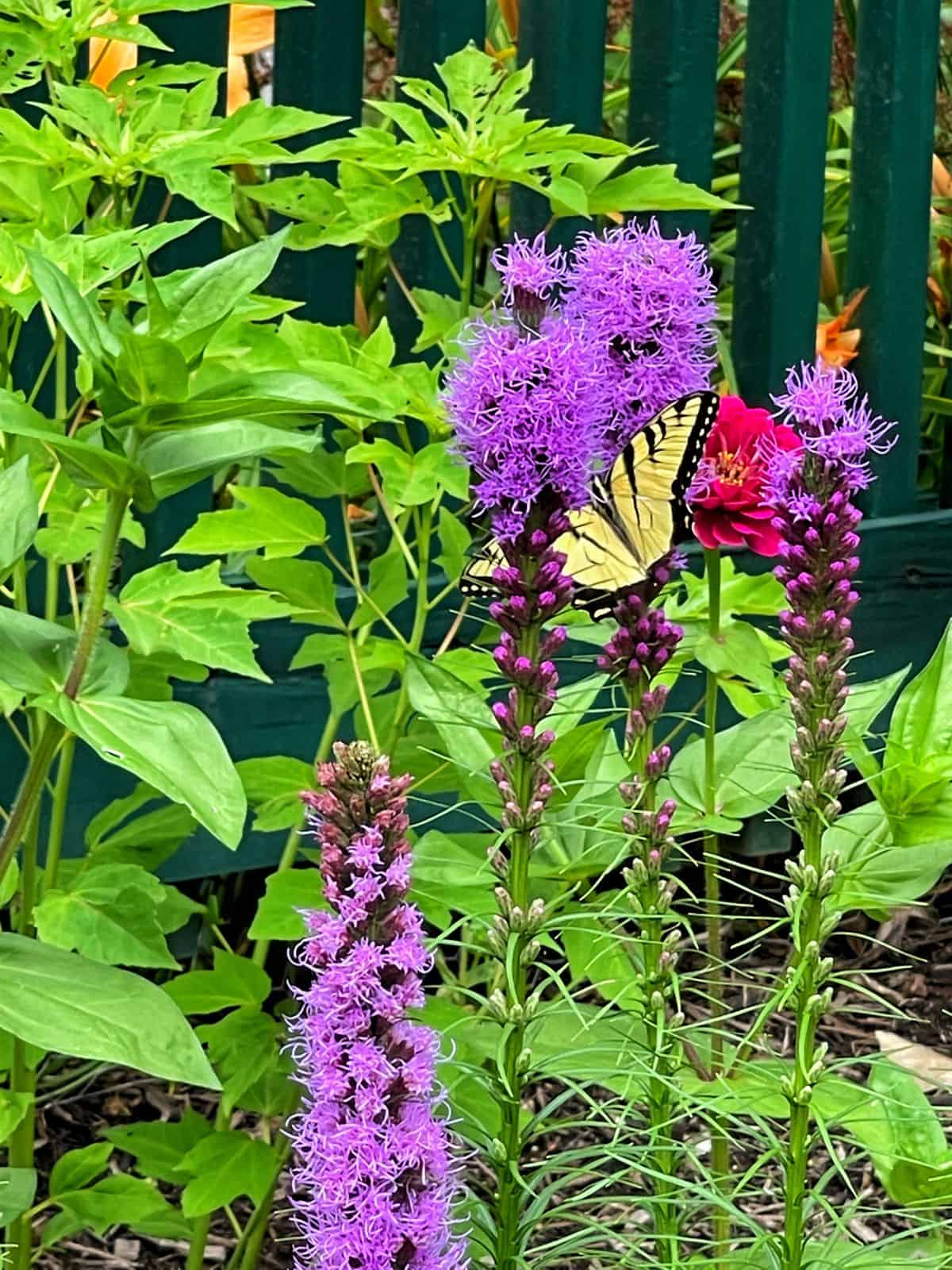
Goldenrod (Solidago spp.)
Goldenrod is a robust perennial native to North America, known for its bright yellow flower clusters that attract numerous pollinators. Often unfairly associated with allergies, goldenrod is actually an important source of nectar for bees, butterflies, and other pollinators.
Bees, butterflies, and other beneficial insects flock to its abundant nectar and pollen-rich flowers. The flowers look really pretty in the late summer to fall garden. So if you find your garden has a lull with color and texture, consider adding non-invasive goldenrod for a fun pop of color.
It’s important to note that some goldenrod species can be incredibly invasive, so it’s recommended to read plant tags, speak with your local cooperative extension, and choose non-invasive varieties for your garden only.
By selecting the right goldenrod species, you can enjoy its late season color while providing a vital food source for pollinators without the risk of it spreading beyond desired boundaries.
- USDA Hardiness Zone: 3-9
- Type: Perennial
- Sun Requirements: Full sun to partial shade
- Light Conditions: Prefers full sun for best flowering
- Bloom Time: Late summer to early fall
- Height: 2-5 feet
- Width: 1-2 feet
- Native Range: North America
- Pollinators Attracted: Bees, butterflies, and other beneficial insects
- How It Attracts Pollinators: Goldenrod’s numerous small, bright yellow flowers provide abundant nectar and pollen, attracting a wide variety of pollinators during its bloom period.

Common Milkweed (Asclepias syriaca)
Common Milkweed is a vital native perennial known for its role in supporting Monarch butterflies. It is a must-have for them because common milkweed is the host plant for their caterpillars while creating a stunning visual display with abundant nectar for bees and butterflies in summer.
As a host plant for monarch caterpillars, milkweed provides a crucial nursery for their development. The nectar-rich flowers of milkweed also attract a wide array of pollinators, including bees, butterflies, and hummingbirds.
By planting milkweed in your garden, you not only support the survival of monarch butterflies but also create a haven for diverse pollinator species, contributing to the overall health and biodiversity of your ecosystem.
Last year, my milkweed was attacked by aphids. Instead of grabbing a pesticide, I opted to spray them off daily with a spray of the garden hose.
- USDA Hardiness Zone: 3-9
- Type: Perennial
- Sun Requirements: Full sun
- Light Conditions: Prefers full sun
- Bloom Time: Early to mid-summer
- Height: 3-5 feet
- Width: 1-3 feet
- Native Range: Eastern and Central North America
- Pollinators Attracted: Monarch butterflies, bees, and other insects
- How It Attracts Pollinators: The clusters of fragrant, pinkish-purple flowers provide nectar, and the leaves are crucial for Monarch caterpillars.

Hibiscus ‘Crimsoneyed Rosemallow’ (Hibiscus moscheutos)
Hibiscus ‘Crimson-eyed Rose Mallow’ is a striking native perennial known for its large, showy flowers with deep red petals and a dark center.
This captivating native hibiscus is not only a visual delight but also a magnet for pollinators. Bees, butterflies, and hummingbirds are drawn to the abundant nectar and pollen offered by its showy blooms.
What I love most about them are the large showy flowers that add a touch of tropical beauty to your pollinator garden. Give hardy hibiscus lots of room to grow because they get really big! You cannot beat the size of the blooms and the foliage color is beyond gorgeous.
- USDA Hardiness Zone: 5-9
- Type: Perennial
- Sun Requirements: Full sun
- Light Conditions: Prefers full sun for optimal growth
- Bloom Time: Mid-summer to early fall
- Height: 4-7 feet
- Width: 2-4 feet
- Native Range: Eastern and Central North America
- Pollinators Attracted: Bees, butterflies, and hummingbirds
- How It Attracts Pollinators: The large, white flowers with a crimson eye provide abundant nectar and pollen, attracting a variety of pollinators throughout its blooming period.

Purple Giant Hyssop (Agastache scrophulariifolia)
Purple Giant Hyssop is a native perennial prized for its tall spikes of lavender flowers and pollinator-friendly nature that add a touch of elegance to any garden.
As a native species, it has evolved to attract a diverse range of pollinators. Bees, butterflies, and hummingbirds are particularly attracted to the abundant nectar-filled blooms of purple giant hyssop.
Its tubular flowers and sweet fragrance make it an irresistible destination for these pollinators, ensuring that your garden becomes a buzzing hub of activity and supports the health and well-being of these essential creatures.
I just planted some agastache in my new garden on the side of our home from Proven Winners. It’s called Agastache “Royal Raspberry’.
- USDA Hardiness Zone: 4-8
- Type: Perennial
- Sun Requirements: Full sun to partial shade
- Light Conditions: Prefers full sun
- Bloom Time: Mid-summer to early fall
- Height: 3-5 feet
- Width: 1-2 feet
- Native Range: Eastern North America
- Pollinators Attracted: Bees, butterflies, and hummingbirds
- How It Attracts Pollinators: The lavender flower spikes are rich in nectar, attracting a variety of pollinators throughout the blooming period.
Incorporating Purple Giant Hyssop into your pollinator garden not only adds vertical interest and fragrance but also supports a diverse range of pollinators, enhancing the ecological balance of your garden.

Coreopsis (Tickseed)
Coreopsis, commonly known as tickseed, is a versatile native perennial that adds bright color and attracts pollinators. With their bright and cheerful yellow or golden flowers, coreopsis acts as a beacon for pollinators. Bees, butterflies, and other nectar-seeking insects are highly attracted to the abundant nectar and pollen provided by coreopsis blooms.
Their daisy-like flowers and extended blooming period make coreopsis an excellent source of sustenance for these vital pollinators, bringing life and movement to your garden while supporting the well-being of these beneficial creatures.
- USDA Hardiness Zone: 4-9
- Type: Perennial
- Sun Requirements: Full sun
- Light Conditions: Prefers full sun
- Bloom Time: Late spring to late summer
- Height: 1-3 feet
- Width: 1-2 feet
- Native Range: North America
- Pollinators Attracted: Bees, butterflies, and other beneficial insects
- How It Attracts Pollinators: The bright, daisy-like flowers are rich in nectar and pollen, making them highly attractive to a variety of pollinators.
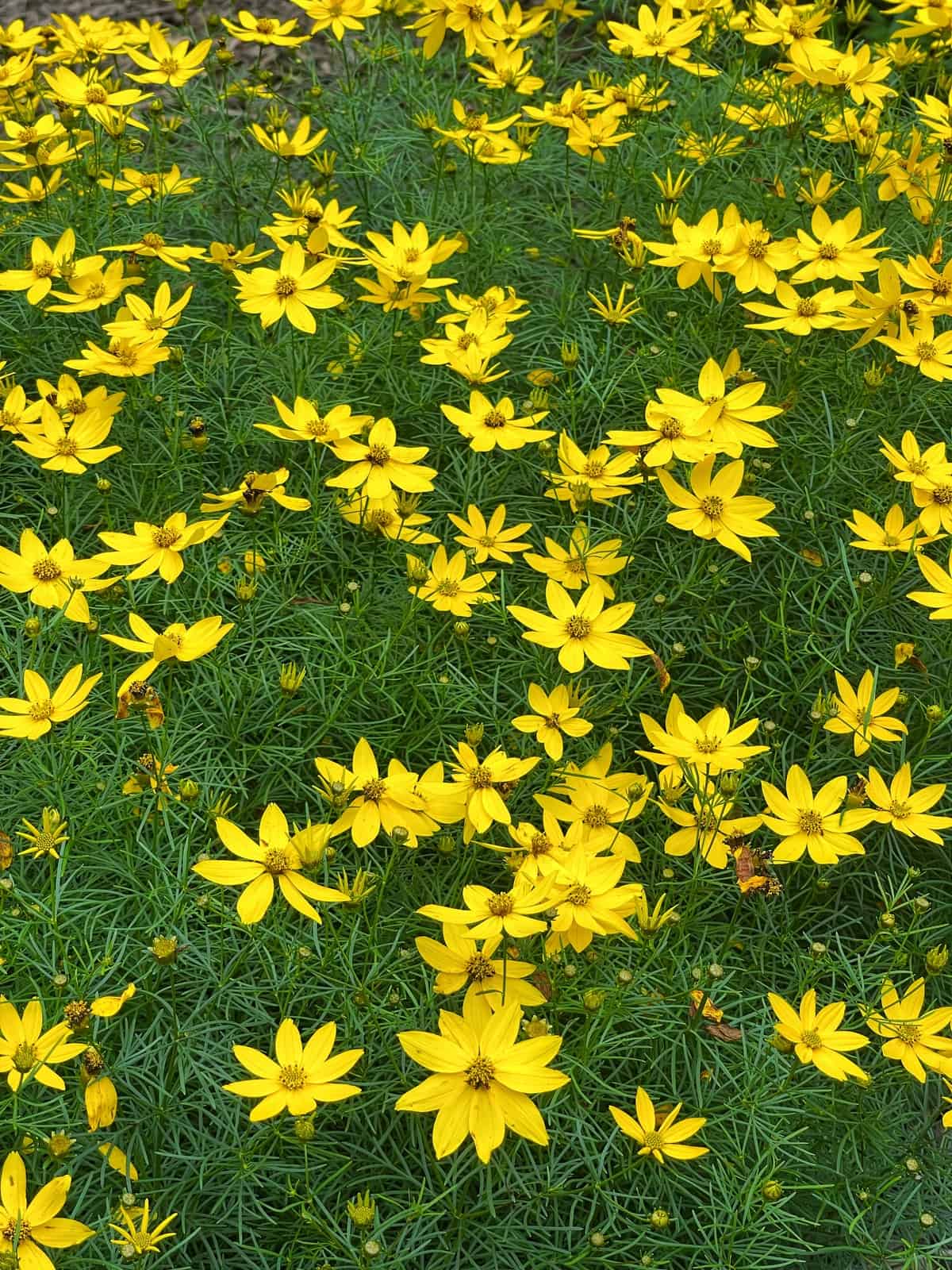
My New Pollinator Garden
On the side of our home, where we had a barren bed with just a few daffodils, I decided to create a new pollinator garden. This area gets full to partial sun and is currently filled with mulch, making it the perfect spot to attract bees, butterflies, and other pollinators.
To protect these plants from deer, I’ll use deer repellent spray regularly. It’s been so much fun planning and planting this new garden, and I’m excited to see how it grows and supports our local pollinators.
Here’s what I planted (all plants are from Proven Winners and Walters Gardens):
- Agastache ‘Royal Raspberry’
- Echinacea ‘Butter Pecan’
- Echinacea ‘Raspberry Beret’
- Amsonia ‘Storm Cloud’
- Achillea ‘Firefly Peach Sky’
- Gypsophila ‘Festival Star’
- Dianthus ‘Raspberry Ruffles’
- Anemone ‘Fall in Love’
- Salvia ‘Azure Snow’
- Clematis ‘Stand by Me’
- Leucanthemum ‘Marshmallow’
- A few everblooming hydrangeas from a friend
In the fall, I plan to add a few perennial divisions of bee balm, liatris, and coreopsis too. But for now, this is a great start! While not all of these are native plant varieties, they attract lots of pollinators that will enjoy the flowers.

Frequently Asked Questions About Native Plants and Pollinator Gardens
Creating a pollinator garden is a rewarding way to support local wildlife and enhance your outdoor space. Here are answers to some of the most commonly asked questions about establishing and maintaining a pollinator-friendly garden.
How do I choose the best native plants for my pollinator garden?
Research plants that are native to your specific region. Native plants are well-adapted to local conditions and are more likely to attract and support local pollinators. Consider factors such as bloom time, soil type, and sun exposure.
What can I do to maintain my pollinator garden without using pesticides?
Embrace natural pest control methods such as companion planting, introducing beneficial insects, and regularly monitoring your plants for pests. Maintaining plant diversity can also help reduce pest outbreaks.
How do I provide water for pollinators in my garden?
Create shallow water sources such as birdbaths, small ponds, or shallow dishes filled with water and stones for landing spots. Ensure a constant water supply by regularly refilling these sources or installing a drip system.
When is the best time to plant a pollinator garden?
The best time to plant a pollinator garden is in the spring or fall when temperatures are milder and plants have a better chance to establish their root systems. However, specific planting times can vary depending on your local climate and the types of plants you are using.
How can I attract a variety of pollinators to my garden?
Plant a diverse range of flowers that bloom at different times of the year, providing continuous food sources. Include host plants for caterpillars and provide water and shelter. Avoid using pesticides and create a habitat that supports all stages of pollinator life cycles.

Final Thoughts About the Top Native Plants for Creating a Pollinator Garden
There are lots of different options of native plants so research the specific native plants that thrive in your region, as they may vary. Incorporating a mix of annuals, perennials, shrubs, and trees will provide a multi-layered habitat for a diverse range of pollinators.
Check out these sites as a starting point but check with your local cooperative extension as they’ll have a great list to review.
If you’d like some tips for designing a garden that’s always in bloom, click here. And if you’d like to do a deeper dive on how to attract more butterflies to your garden, here are 31 easy-care plants to include in your home garden.
For more specific information on gardening for hummingbirds, check out these 9 flowering plants that attract them.
To drill down on more beginner gardening techniques and tips, please read these posts:
- Flower Gardening 101
- Growing a Cut Flower Garden for Beginners
- Container Garden Ideas for Beginners
- How to Start a Vegetable Garden
- Herb Gardening for Beginners
Thank you so much for following along.
Enjoy a beautiful day! xo
